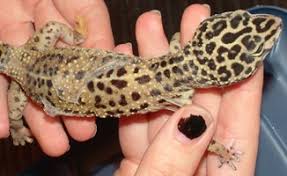Leopard geckos are one of the most popular reptiles in the pet trade, beloved for their unique look, relatively low-maintenance care requirements, and calm demeanor. As more people look to add them to their homes, a common question arises: Do leopard geckos like to be held?
If you’re considering bringing one of these charming creatures into your life, or perhaps you already have a gecko and want to improve your bond, this question is likely at the forefront of your mind. After all, many people adopt pets to interact with them—so it’s natural to want to know how to connect with your new reptilian friend.
In this comprehensive guide, we’ll explore whether leopard geckos like to be held, how to safely handle them, signs of stress to look out for, and alternatives to physical interaction that can help build a trusting relationship with your gecko.
By understanding their behavior and preferences, you can provide a comfortable, enriching environment for your pet that respects their unique nature.
Understanding Leopard Geckos’ Nature

Before jumping into the specifics of handling, it’s important to understand the natural behavior and instincts of leopard geckos. Like many reptiles, they are different from traditional pets like cats and dogs in the way they interact with humans.
Reclusive Nature vs. Social Behavior
Leopard geckos are solitary animals by nature. Unlike some reptiles, such as bearded dragons, which can tolerate the company of others, leopard geckos prefer to live alone in the wild. They are primarily nocturnal, coming out of their hideouts at dusk to hunt for insects and explore their environment.
This means that during the day, when most people are awake and active, your gecko will likely be resting in its hide or basking under a heat source.
While they are not as social as some other pets, leopard geckos are generally calm and not aggressive. However, their solitary nature means that they don’t actively seek out human interaction the way a dog or cat might. Instead, they will tolerate being handled as long as it’s done gently and with respect to their needs.
Key Factors Influencing Comfort with Handling
Just like humans, leopard geckos have unique personalities. Some may enjoy being held and will calmly sit on your hand, while others might be more timid or shy. Several factors influence a gecko’s comfort level with handling:
- Age: Juvenile geckos tend to be more skittish and may take longer to get used to being handled. Adults, on the other hand, are often more accustomed to human interaction and may be more willing to tolerate gentle handling.
- Previous Experiences: If your leopard gecko was hand-raised or has been handled gently from a young age, it may be more comfortable with human interaction. However, geckos that have had negative experiences with handling might be more prone to stress.
- Environment: A gecko that feels secure in its environment will be more open to interaction. If your gecko feels threatened or stressed by environmental factors like bright lights, loud noises, or a poorly maintained habitat, it may be less willing to engage with you.
Do leopard geckos like to be held?
While leopard geckos may not “enjoy” being held in the way that a dog might enjoy a belly rub, many of them can tolerate handling without significant stress. Understanding whether your leopard gecko likes to be held comes down to their individual temperament and your ability to read their body language.
Behavioral Insights
Leopard geckos communicate their feelings through body language. A calm, relaxed gecko may tolerate being held for a short period, while one that is stressed or uncomfortable may show signs of distress. Here are some behavioral cues to look out for:
- Calm Posture: If your gecko is calm, it will typically remain still in your hands or sit comfortably on your lap. A relaxed gecko may even close its eyes or look around at its surroundings without displaying any signs of fear.
- Tail Wagging or Waving: Some geckos will wag their tails when excited or feeling curious. However, if the tail is rigid and pointed, this could indicate stress or discomfort.
- Gently Moving Around: A gecko that is trying to explore may walk around on your hands or move between your fingers. This can be a sign of curiosity, especially if it’s done calmly without frantic movements.
- Hiding or Being Still: If your gecko attempts to hide or stays still when picked up, it could be a sign that it’s anxious. If this happens frequently, it may not enjoy being held and prefers to be left alone.
Personal Preferences
Like people, each leopard gecko has its own personality. Some are naturally more relaxed and curious, while others are more skittish or shy. For example, geckos that have been bred in captivity and handled frequently may be more accustomed to human touch. In contrast, a gecko raised in the wild or one that has not been handled much may take longer to adjust to human interaction.
There are also individual differences based on age and species. Juvenile geckos may be more nervous and harder to hold, while adult geckos may be more docile and easier to handle, though some individuals may never fully warm up to being held. It’s essential to recognize and respect your gecko’s preferences.
How to Safely Handle Your Leopard Gecko

Handling your leopard gecko properly is essential to building trust and ensuring that the experience is stress-free for both you and your pet. The key is to be gentle, calm, and understanding of their boundaries.
Tips for Gentle Handling
- Pick Up Slowly and Gently: Approach your gecko calmly and use both hands to scoop it up. Avoid sudden movements that might startle it. Gently lift your gecko by supporting its body, not by its tail, which is delicate and can break off if grabbed.
- Give Your Gecko a Chance to Adjust: Allow your gecko to climb onto your hand rather than forcing it. Geckos feel more comfortable when they have the freedom to move at their own pace.
- Keep Handling Sessions Short: If you’re introducing handling, start with short, gentle sessions. Gradually increase the time as your gecko becomes more comfortable.
- Stay Calm: Reptiles are highly sensitive to stress. If you’re nervous or anxious, your gecko will likely sense that and may become more anxious itself. Stay calm and relaxed during the interaction.
When Not to Handle
There are certain times when it’s best to leave your gecko alone. For example:
- During Shedding: Geckos can be particularly sensitive while shedding, and they often prefer to be left undisturbed during this time.
- After Eating: Handling a gecko immediately after it has eaten can cause stress and may even disrupt its digestion.
- If Your Gecko is Hiding: If your gecko retreats to its hide, it’s a sign that it wants some alone time. Give it space and try handling it at a later time.
Signs of Stress or Discomfort
Although leopard geckos are generally calm, handling them inappropriately can lead to stress. It’s crucial to recognize the signs of discomfort to avoid stressing your gecko unnecessarily.
How to Identify Stress
- Tail Lashing or Wagging: A gecko that’s waving its tail rapidly or lashing it back and forth may be stressed or trying to communicate unease.
- Running Away: If your gecko is running away or attempting to jump off your hand, it’s a sign that it’s uncomfortable.
- Hissing or Puffing Up: Some geckos may puff up their bodies or make hissing sounds when they feel threatened or stressed. These behaviors should be respected, and the gecko should be given space.
- Refusal to Eat: If your gecko consistently refuses food, it could be a sign of stress, which can sometimes be caused by handling.
What to Do When Your Gecko is Stressed
- Respect Their Space: If your gecko shows signs of stress, stop handling it immediately and place it back in its enclosure. Give it time to calm down.
- Provide a Calm Environment: Ensure that your gecko’s habitat is stress-free, with proper lighting, temperature, and hiding spots.
Alternatives to Handling for Bonding
While some leopard geckos may never fully enjoy being held, there are other ways to bond with your pet that don’t involve physical contact. These methods can help you build trust and provide enrichment.
Non-Physical Bonding Activities
- Let Them Explore: Give your gecko the opportunity to roam freely in a safe, enclosed area. This can help them become more comfortable with their surroundings and your presence.
- Offering Food: Offering treats, like crickets or mealworms, can be an excellent way to interact with your gecko. Many geckos will associate you with food, building a positive connection.
Enrichment Ideas
- Provide Hides and Climbing Structures: Leopard geckos enjoy having a variety of hiding spots and places to explore. This keeps them mentally stimulated and comfortable.
- Create a Naturalistic Environment: The more you can mimic a natural environment, the more at ease your gecko will feel. This includes using substrates, plants, and rocks that encourage exploration.
Conclusion
This page answers the question on Do leopard geckos like to be held? Leopard geckos may not be pets that actively seek out affection the way a dog or cat might, but they can tolerate being held if approached properly. Every gecko is different, and their comfort level with handling depends on factors like age, temperament, and previous experiences.
By understanding their natural behavior, learning to read their body language, and handling them gently, you can develop a trusting bond with your gecko. Respect their boundaries, be patient, and enjoy the unique companionship that these fascinating reptiles offer.

